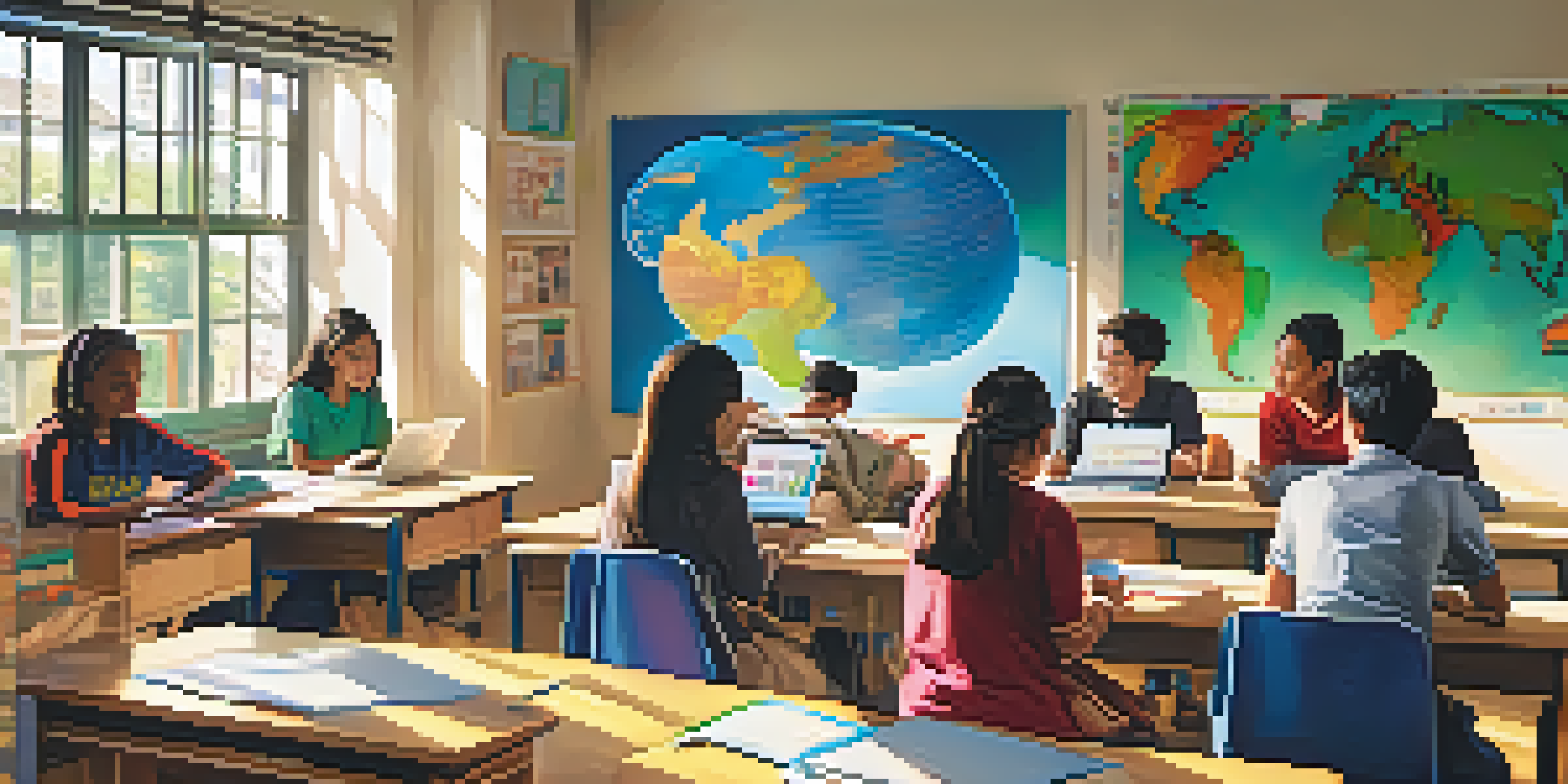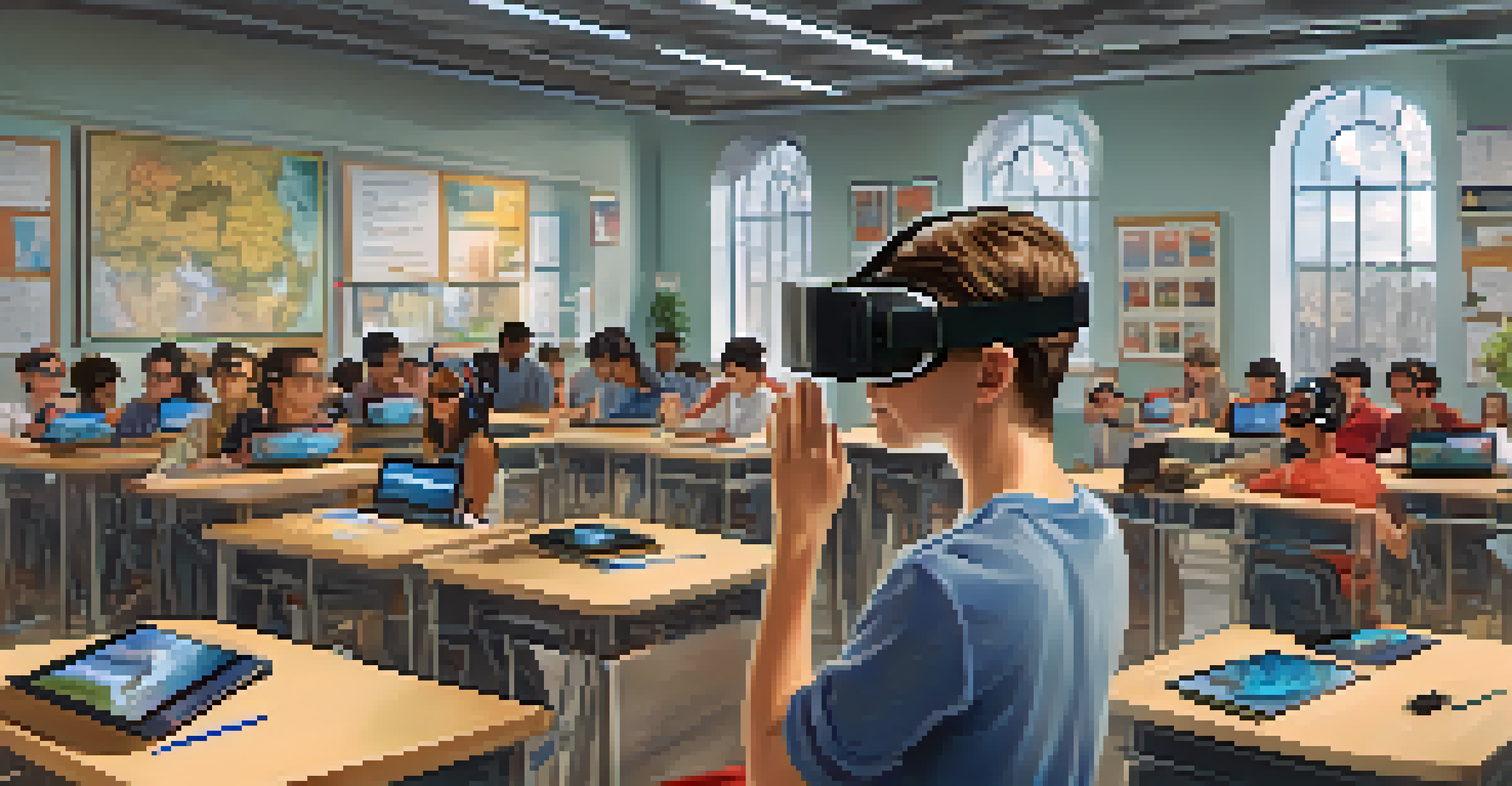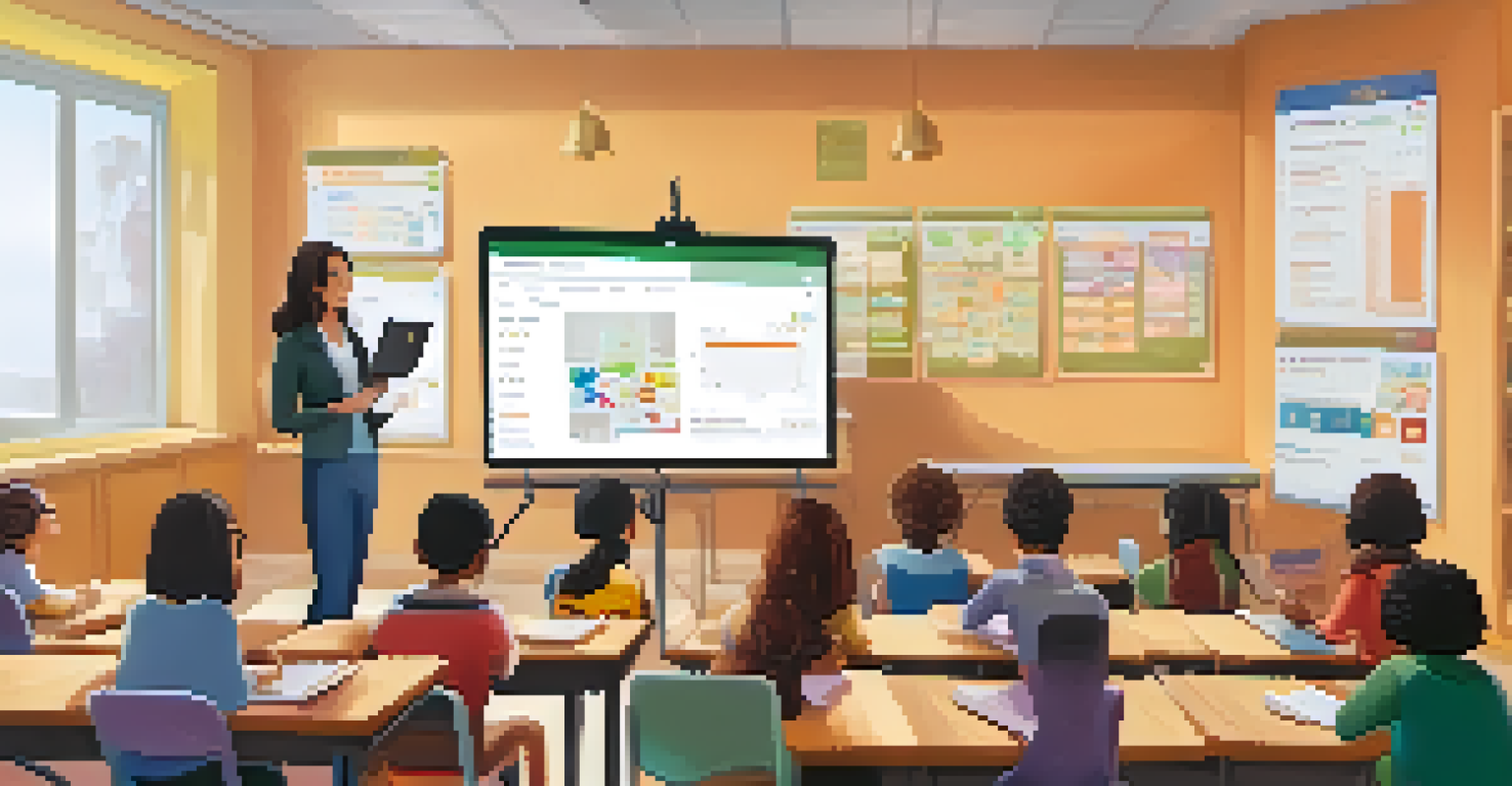Blended Learning in International Schools: A Comparative Study

Understanding Blended Learning in International Schools
Blended learning combines traditional face-to-face teaching with online instruction. This approach has gained traction in international schools, where diverse student populations often require flexible learning environments. By integrating technology into the classroom, educators can cater to individual learning styles, making education more accessible and engaging for everyone.
Blended learning is not just about technology; it's about creating a learning environment that caters to the diverse needs of all students.
For instance, a student from Brazil studying in an international school in Germany might struggle with language barriers. Through blended learning, they can access online resources at their own pace, while still benefiting from in-person support. This flexibility not only enhances comprehension but also helps build confidence in their learning journey.
Overall, blended learning fosters a dynamic educational atmosphere, encouraging collaboration and interaction among students from various backgrounds. As international schools continue to embrace this model, it’s crucial to understand its implications for teaching and learning.
Advantages of Blended Learning for Students
One of the most significant advantages of blended learning is personalization. Students can tailor their educational experiences according to their strengths and weaknesses, which is particularly beneficial in a multicultural setting. For example, visual learners might thrive with video content, while auditory learners may prefer podcasts or discussions.

Additionally, blended learning promotes self-paced learning, allowing students to revisit complex topics as needed. This is especially helpful for international students who may need extra time to grasp certain concepts. With a mix of online resources and classroom activities, students can reinforce their understanding through various means.
Blended Learning Enhances Accessibility
Blended learning combines online and in-person instruction, making education more accessible and engaging for diverse student populations in international schools.
Moreover, blended learning encourages the development of essential skills such as time management and self-discipline. As students take more responsibility for their learning, they become better equipped for future academic and professional challenges, making them well-rounded individuals.
Challenges Faced by International Schools in Implementation
While blended learning offers numerous benefits, it also presents challenges, especially in international schools. One primary concern is access to technology. Not all students may have reliable internet connections or devices, creating disparities in learning opportunities. Schools must address these issues to ensure equitable access for all students.
The future of education lies in blending the best of traditional teaching with digital technology to create more personalized learning experiences.
Furthermore, teacher training is crucial for successful implementation. Many educators may not be familiar with blended learning strategies or the technology involved. Professional development programs can help teachers acquire the necessary skills to facilitate blended learning effectively, ensuring they can support their students appropriately.
Lastly, balancing online and offline components can be tricky. Teachers need to find the right mix of in-person instruction and digital resources to maximize student engagement. Striking this balance requires ongoing assessment and adjustment to meet the evolving needs of a diverse student body.
Comparative Analysis: Blended Learning Models
Various blended learning models exist, each with unique features tailored to different educational settings. The rotation model, for instance, allows students to alternate between online and classroom instruction, providing a structured approach. International schools often adopt this model to help students transition between various modes of learning smoothly.
Another popular model is the flex model, where online learning is the primary mode, and in-person sessions are provided as needed. This model offers significant flexibility, allowing students to engage in self-directed learning while still receiving support from their teachers. It’s particularly advantageous for students who may have varying schedules or commitments.
Personalization Boosts Student Success
This approach allows students to tailor their learning experiences according to their strengths and weaknesses, fostering self-paced and personalized education.
Ultimately, selecting the right blended learning model depends on the specific needs of the school community. By assessing the strengths and weaknesses of each model, international schools can tailor their approach to maximize student success.
The Role of Technology in Blended Learning
Technology plays a pivotal role in the success of blended learning initiatives. Tools such as learning management systems (LMS) enable educators to deliver content, track progress, and communicate with students effectively. These platforms can streamline administrative tasks, allowing teachers to focus more on instruction and engagement.
Moreover, technology fosters collaboration among students. Online discussion boards, video conferencing, and collaborative projects create opportunities for students to connect, regardless of their geographical location. This interaction helps build a sense of community within international schools, promoting cultural exchange and understanding.
However, it’s essential to ensure that technology is used thoughtfully. Educators must strike a balance between leveraging digital tools and maintaining meaningful face-to-face interactions. By combining the best of both worlds, international schools can create an enriching blended learning environment.
Case Studies: Successful Implementation of Blended Learning
Several international schools have successfully implemented blended learning, providing valuable insights for others. For example, the International School of Amsterdam adopted a blended learning model that integrates online resources with classroom activities. This approach has led to improved student engagement and academic performance, particularly in STEM subjects.
Another success story comes from the United World College in Singapore, where educators utilized a flex model to accommodate students’ diverse learning needs. By allowing students to choose their learning paths, the school has seen increased motivation and a sense of ownership over their education, resulting in a more empowered student body.
Technology is Key to Effective Learning
The successful implementation of blended learning heavily relies on technology, which facilitates communication, collaboration, and resource access for students and teachers alike.
These case studies highlight the potential of blended learning to transform educational experiences in international schools. By learning from these successes, other institutions can adapt and implement similar strategies to enhance their own educational environments.
Future Trends in Blended Learning for International Schools
As blended learning continues to evolve, several trends are emerging that could shape its future in international schools. One significant trend is the increasing integration of artificial intelligence (AI) in educational technology. AI can provide personalized learning experiences by adapting content to individual student needs, further enhancing the effectiveness of blended learning.
Additionally, the rise of virtual and augmented reality (VR/AR) technologies offers exciting possibilities for immersive learning experiences. These technologies can transport students to different parts of the world, allowing them to explore cultures and environments without leaving the classroom. This innovative approach can enrich the learning experience and foster a deeper understanding of global issues.

Finally, as international schools become more interconnected, collaboration between schools worldwide is likely to increase. Sharing resources, best practices, and innovative strategies can enhance the effectiveness of blended learning models globally, creating a more cohesive educational experience for students everywhere.